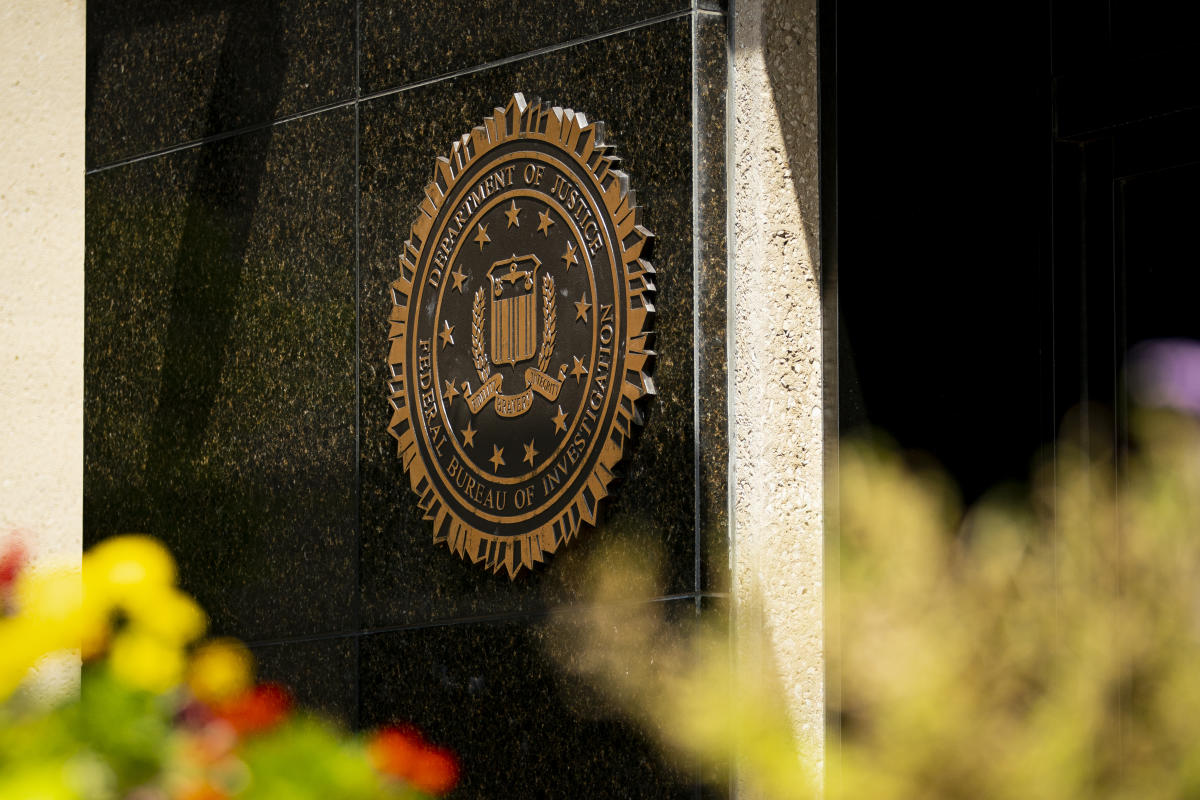Earlier this month, the Department of Justice
announced the arrest of a Pennsylvania man charged with threatening to kill FBI personnel after federal agents executed a search warrant at the Florida home of former President Donald Trump.
The suspect, Adam Bies, had allegedly posted a series of threats on the far-right social media platform Gab, in which he compared the FBI to Nazi- and Soviet-era secret police, discussed wanting to “slaughter” agents and wrote, among other things, “I sincerely believe that if you work at the FBI you deserve to die.” He’s been charged with interstate threats and influencing or retaliating against a federal officer.
Bies’s alleged posts were part of a deluge of
violent and vulgar content that spread quickly across pro-Trump segments of social media in response to the Aug. 8 search of Mar-a-Lago, which stemmed from an investigation into the possible
mishandling of classified documents that were taken from the White House after Trump’s term in office.
Outraged Trump supporters called for civil war and circulated personal information about the
federal judge who approved the warrant authorizing the search, along with antisemitic threats. But the bulk of the vitriol was directed at the FBI.
On Aug. 11, one day before Bies was arrested at his home in Mercer, Pa., a man in Ohio was killed by police after he allegedly attempted to attack an FBI field office in Cincinnati with a nail gun and an AR-15. He appears
to have posted a call to arms against the FBI on Truth Social, Trump’s social media platform, prior to the attempted attack.
For extremism experts and federal law enforcement alike, the Cincinnati incident highlighted how this kind of rhetoric can inspire real-world violence. But intercepting such threats can be complicated.
The Bies case offers a glimpse of how law enforcement identifies legitimate threats of violence online, and what the difference is between criminal threats and the rest of the hateful, vile and often violent — yet protected — speech that has become commonplace across social media.
“The way I had always internalized it is, it needed to be a specific threat to injure, harm or kill a particular individual or group of individuals,” she said. Simply disapproving of the way the FBI operates, or even generally wishing death on the agency’s employees, would not be enough to constitute a prosecutorial offense.
“When I was in the U.S. attorney's office, we’d have a few of these every year where somebody posted something online about killing cops,” McQuade said. “And it’s hard because we would get these things from social media where people said really awful, ugly things. But even [something] like ‘All cops should die’ or ‘I wish they would die’ would not amount to what is known as a true threat.”
------
According to court documents, after being alerted to the threatening posts by the DTTM, the FBI issued an emergency disclosure request to Gab, which promptly handed over information regarding the BlankFocus account, including the user’s email address and recent IP logs, which ultimately led the bureau to Bies.
After Bies’s arrest, Gab CEO
Andrew Torba issued a warning to other users: “Let me spell this out for you in plain terms: do not post threats of violence on Gab or anywhere else on the internet. Threats of violence are not protected by the First Amendment and therefore are not protected by Gab’s Terms of Service.”
Gab also confirmed its cooperation with the FBI
in a statement days later, after
receiving a letter from top Democrats on the House Oversight Committee requesting information on how social media companies are responding to the spike in online threats against law enforcement officers since the search at Mar-a-Lago.
Following his initial court appearance,
a grand jury indicted Bies on a total of 14 counts — seven for interstate threats and seven for influencing or retaliating against a federal officer — related to seven of his alleged posts targeting FBI officers following the Mar-a-Lago raid. If found guilty, he faces a maximum penalty of up to 10 years in prison, a fine of $250,000 or both.
Bies has pleaded not guilty. Sarah Levin, the federal public defender representing him, did not respond to a request for comment.
At a detention hearing on Aug. 19, Frankhouser
reportedly testified that when agents arrived to arrest Bies at his home, he emerged from the house carrying an AR-style assault rifle before complying with commands to drop the weapon. Prosecutors said 12 other guns were found in a search of the house, including shotguns, rifles and pistols, as well as a compound bow.
(full article online )
The Bies case offers a glimpse at how law enforcement identifies legitimate threats of violence online, and what the difference is between criminal threats and the rest of the hateful, vile and often violent – yet protected – speech that has become commonplace across social media.

www.aol.com




